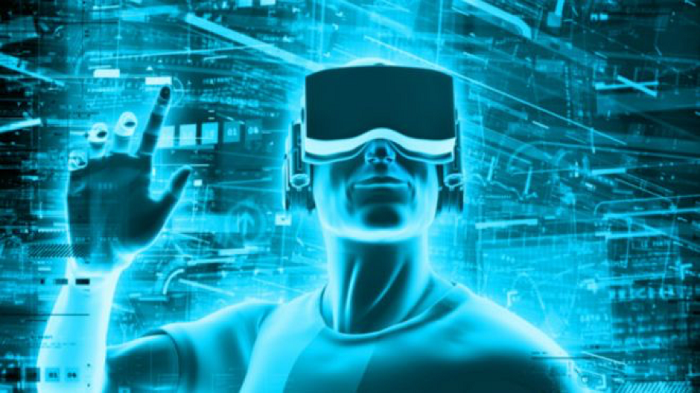Virtual Reality is not something new and the technology has been around for quite some time now. Most of the hype and innovation in VR has been in the consumer segment offering gamers a rich, interactive gaming environment which is probably why most of us associate VR with gaming. However, VR has huge potential beyond the consumer space and offers a lot of scope in the commercial world too, even though VR still seems to be in its infancy stage in terms of mass adoption and applications.
Last year global VR headsets shipments of nearly 9.2 million were expected to reach 13.6M by 2018 and 39.7M by 2021 (a CAGR of 34%), according to market intelligence firm, IDC. The 2017 figure was earlier (per the Q2 2017 forecast report) expected to be 13M, however the industry is not growing at the pace initially expected, therefore the figure was brought down to 9.5M. Analysts at the research firm expects additional new products to be launched in 2018, including standalone headsets from major players with a growing number of companies embracing the technology to enable new business processes and training opportunities.
The industry is facing a number of challenges which is why despite a wide range of devices already available in the market and tremendous amount of excitement with people looking for more immersive experiences, the adoption rate remains low. These challenges stem from both the developer point of view and as well as consumer’s.

Victor Metelskiy, IT-Evangelist, NNTC (Nomad Network Training Centre) explains that the number of VR content developers in the market is small resulting in lack of qualified content which is one of the key factors that hamper the development of VR.
The profession of a VR content developer is still very young and needs time to mature into a standalone specialization. “High-quality VR content requires powerful computing capacity and expertise. For example, game developers produce content of acceptable quality but still it hardly qualifies for the use in manufacturing and business,” adds Metelskiy.
One of the main challenges in the VR space, according to experts is getting the technology into the hands of the masses. In addition, it is even more important to provide customers with compelling content that adds value to their lives and demonstrates its capability as a viable technology. Particularly for this region, non-availability of content in local language presents another roadblock to fast adoption. For this technology to gain more popularity, it is imperative that the content is in the user’s native language, to which they connect instantly and in headsets that provide a quality experience.

Dr. Sana Farid – ARVR Strategist MENA, Munfarid stresses that as a VR evangelist she feels that another challenge is the need for 5G infrastructure which is still developing in many countries in addition to highly motivated, responsible and trained staff from the inception stage to marketing stage.
The challenge in developing innovative content, removing the negative VR experiences, lack of education on VR, as well as slow growth in commercial sector, has impacted the overall refresh rate and adoption of the technology. Unsurprisingly, IDC research analysts predict that this industry is not expected to see an aggressive growth for at least another 4-5 years in MEA.
However, there is a silver lining to this story. Industry investments are playing a big role in the growth of VR. Technology giants are making huge investments in the virtual reality market landscape, such as Facebook’s US$ 2 billion acquisition of Oculus VR headset. Samsung, through innovation with Oculus VR, has also produced virtual reality devices for use, along with its top leading smartphones. Recently Facebook CEO Mark Zuckerberg, said he expects to spend $3 billion over the next decade to make VR more accessible, and that’s after his company bought Oculus for more than 2 billion dollars.

In partnership with some of the industry’s biggest players including Disney, Google and Microsoft, Lenovo is all set to bring innovation in the form of VR-ready PCs and HMDs. “Virtual reality plays a big role within the business industry since VR is seen as a buzz word that brings inspiration, engagement and drives positive impact. We have seen world leading brands making use of immersive VR experiences as a way to market their own products and services,” adds Mohamed Hilili, General Manager Gulf, Saudi Arabia & East Africa – Lenovo.
The total VR revenue is expected to increase to $162 billion in 2020, paving way for more developments. Popularized by gaming and ed-tech, the technology flanks over other domains too like medicine, business, architecture, and manufacturing. According to Dr. Sana Farid though VR might seem to be in its infancy but it is developing at an unprecedented speed.
The UAE is one of the most promising retail markets for consumer electronics, and consumers are expected to continue to spend on VR. If utilized correctly, retailers can explore innovative methods of leveraging VR technologies within their business in order to transform customer experience and increase sales. Gaming and entertainment industries have also been great propellers for the popularity of VR.

“A large segment of VR revenue arises from gaming, however, VR wear is not just limited to gaming. Technology of this nature has several other uses, such as experiential marketing and training. In addition, VR is expected to have far reaching impacts across industries such as education, content and entertainment, and even healthcare,” says Nadeem Khanzadah, Head of OmniChannel Retail, Jumbo Group.
On the hardware side, MEA makes up about 6.1% of the global VR headsets shipments, and is expected to grow further by 6.8% by 2018, as per market intelligence firm, IDC. So it came as no surprise when last year big players like Apple, Google, Intel and Microsoft invested heavily in the VR spectrum.

Nikitas Glykas, President, HTC MEA feels that software is playing a vital role in the success of this new platform. “We expect that in 3-5 years both hardware and software will evolve dramatically. Gaming and entertainment are the pacesetters and in 2017 we saw many premium titles entering in the gaming category like DOOM, Fall Out 4, LA Noire and Star Trek, to name a few. Many Fortune 500 companies have even embraced VR for training and education as well. We want to drive development of VR content that continues to push the boundaries on the kind of experiences VR can deliver.”
In the industrial segment, major growth will happen where the process of reproduction in real life is much more expensive than in virtual reality or impossible at all. This will be true especially in hazardous environments like oil and gas, mining, etc. where users can be given real training in a safer environment, at no additional cost to the company and without any further health and environmental issues.

As per Senior Research Manager META at IDC, Nabila Popal, major boom in the VR industry would come from widespread industrial use of the product and growth in the consumer segment will eventually come from better consumer experience, cost effective product and greater content availability.
Real Estate is another avenue where virtual reality can be used as a tool for real estate sales with holographic tables being used to demonstrate commercial properties and designs to investors and potential buyers. Today, real estate is very often introduced to the market as early as at the construction stage. Virtual reality gives an opportunity to feel like being on site and to see the landscape and surroundings, thus improving sales efficiency even at the pre-construction stage.

Salman Yusuf, Managing Director, TakeLeap says that VR has been implemented in real estate and destination marketing industries primarily as a sales tool and in the oil & gas industry for emergency response training in the region. He also expects VR to make its way in the retail sector this year.
According to market reports, virtual reality is a $2.7B market and will go more mainstream with lower price points and more content, and PC manufacturers will play a major role to the advancement of VR-ready devices as the VR market grows. It will probably change the way businesses interact with consumers, opening up new opportunities for retailers and service providers with continued innovation and investments from global companies.
Education and entertainment will play vital role in the acceleration of this growth. However, growth in the coming years will not just come from a mass-market proposition but also with the development of applications, experiences and games from a larger base of developers.
If these devices become cheaper and more cost effective, infrastructures are VR-ready, there are sufficient users and devices supporting VR then just like computers once, virtual reality will move beyond industrial use to finally reach each and every household, making itself very attractive for businesses. What remains to be seen is how deeply it can penetrate consumer and commercial segments, and whether its advantages are able to overcome the challenges it presents.












